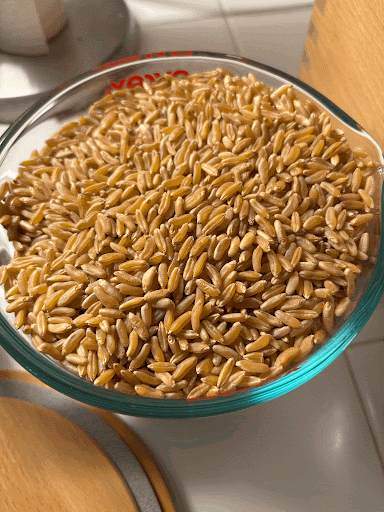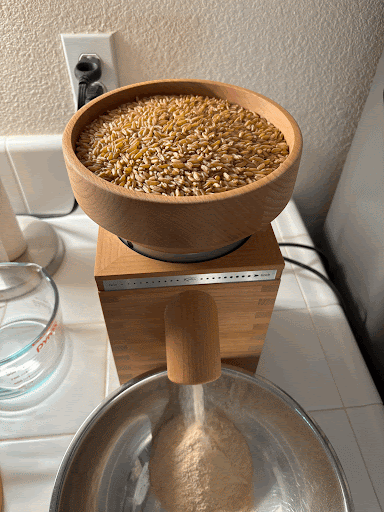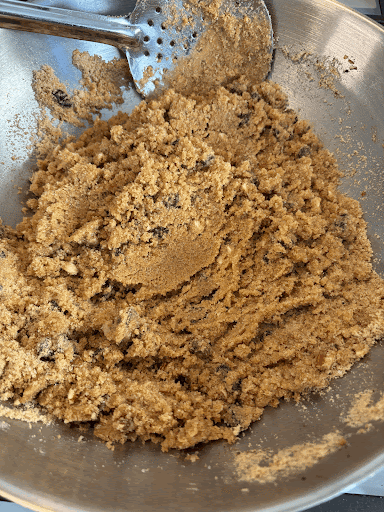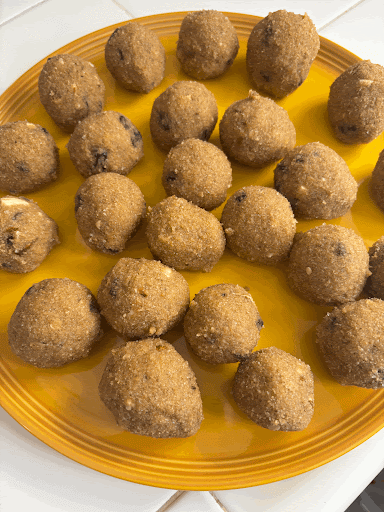Wheat: The Ancient Grain That’s Elevating My Kitchen Game
- Geetanjali Chakraborty

- Feb 18
- 5 min read
Updated: Mar 2
Last year, we had a new addition to our kitchen. While my values are traditional and I really like things from scratch, I am also a huge fan of gadgets that can make life easier. That’s when I decided to invest in my own grain mill—a choice that has completely transformed my kitchen. After scouring reviews and obsessing over specs, I landed on the Komo Fidbus grain mill—and let me tell you, it has been a total game-changer.
Clean food is becoming a huge challenge. With the rise of various health conditions, particularly autoimmune disorders, pinpointing a root cause can be difficult. From an Ayurvedic perspective, everything ultimately connects to gut health. My approach to this challenge? Grinding my own flours—lentils, rice, millets, and most importantly, wheat. For years, I sourced organic wheat, but let’s be real, "organic" doesn’t always mean non-GMO. Finding a way to implement this without consuming too much time has been key. Plus, with more people struggling with gluten intolerance and turning to ultra-processed alternatives, I felt there had to be a better way.
The Ancient Grains Discovery
That’s when I started exploring all the grains that I know of or have eaten in the past few years. My list was limited, but it was enough to try what was closest to what I have been eating over the last four decades. I bought small quantities of each type of wheat berry and experimented for a year to find what felt right. I wanted to recreate the soft, wholesome texture of chapatis straight from my childhood memories. So, I got to work, experimenting with small batches of each grain.
Here’s What I Found:
Spelt: A farmers' market favorite, Spelt bread is hearty and satisfying. But as a chapati flour? A bit too dense for my liking.
Emmer: This grain was trickier than expected. It had a sticky texture, making it less ideal for rolling out perfect chapatis.
Kamut (Khorasan): The clear winner! With its nutty flavor and ultra-soft, pliable dough, Kamut is an absolute dream for making chapatis. Thanks to Bob Quinn, who championed Kamut farming in Montana, it’s now widely available. I buy Kamut wheat berries in bulk and grind my own flour at home.
Freshly milled flour has transformed my chapatis—rich, flavorful, and deeply nourishing. I have to say that it takes a little faith and commitment to the process. The flour is not as smooth as the packaged wheat; it is a little coarse. So, the dough takes some time to get used to, especially in terms of how much water to add and the importance of letting it sit before rolling.
Ancient Wisdom Meets Modern Wellness
Wheat, or Godhum, has long been revered in Ayurvedic texts. Here’s what ancient wisdom has to say:
घोड्हुमः सुमनोऽपि स्यात्त्रिविधः स च कीर्तितः। महागोधूम इत्याख्यः पश्चिमदेशात्समागतः॥ ३१॥
Wheat (Godhuma) is of three types; The first is called Mahagodhuma (superior wheat), which comes from Western lands (West of India).
मधुलि तु ततः किंचिदल्प सा मध्यदेशजा। निःशुल्को दीर्घगोधूमः किञ्चिन्नदीमुखाभिदः॥ ३२॥
The second type is Madhuli, which is slightly inferior and native to the central regions. It is also known as Nihshulka or Dirghagodhuma, characterized by long grains and a slightly cut or broken appearance.
नन्दिमुखः तृतीयोऽयं कीर्तितः स विशेषतः। शीतलः स्निग्धगुणवान् पित्तशामक उच्यते॥
The third type is Nandimukha, which is specifically praised for its cooling and unctuous properties. It is known to pacify Pitta and be beneficial for digestion.
गोधूमो मधुरः शीतो वातपित्तहरो गुरुः। कफ शुक्रप्रदो बल्यः स्निग्धः सन्धानकृत्सरः॥ ३३॥
Wheat is sweet in taste, cooling in nature, and pacifies Vata and Pitta doshas. It is heavy to digest, increases Kapha, promotes strength, and is nourishing, unctuous, and beneficial for healing wounds.
जीवनो बृंहणो व्रणयोर्वर्ण्यो रुच्यः स्थिरत्वकृत्॥ ३४॥
It is life-giving, promotes growth, heals wounds, enhances taste, and provides stability to the body.
मधुलि शीतला स्निग्धा पित्तघ्नी मधुरा लघुः। शुक्रला बृंहणी पथ्या तद्वन्नन्दिमुखः स्मृतः॥ ३५॥
Madhuli wheat is cooling, unctuous, pacifies Pitta, sweet in taste, and light to digest. It promotes vitality, supports growth, is wholesome, and is remembered as Nandimukha.
-Bhavprakash, Dhanya Varga, Verses 31-35
In India, Khapli wheat is our local version of Emmer, another powerhouse grain with a legacy stretching back centuries.
There is a fascinating study where Khorasan wheat was shown to improve non-alcoholic fatty liver disease in rats after just three months. The verdict? Ancient grains aren’t just trendy; they’re packed with undeniable health benefits.
A Kitchen Must-Have
I use wheat primarily in two ways:
Chapatis: Soft, flavorful, and made from freshly milled wheat.
Wheat Ladoos: A nostalgic treat I picked up in Ayurveda school—think of them as energy bites with a wholesome, indulgent twist.
Wheat Laddoos Recipe
This recipe is from my Ayurveda school, and I have had the good fortune of being fed during my two pregnancies. Ever since, I have been paying it forward. These wholesome laddoos are packed with nutrients, making them a perfect snack for any time of the day. They are especially great for growing children who don't have gluten or nut allergies. Two of these (depending on size) are a wonderful alternative to processed, store-bought snack bars.
Ingredients: (Makes about 15)
1 cup whole wheat flour – dry roasted
½ cup mixed nuts (slivered almonds and black raisins) – dry roasted (or roasted in a little ghee)
1 tsp Gond (edible gum) – dry roasted
½ cup sugar – finely ground or left as is
½ tsp cardamom powder
½ tsp ginger powder
Ghee – enough to bind the laddoos (use warm ghee)
Instructions:
Dry roast the wheat flour until aromatic and golden.
Dry roast the nuts and gond separately.
Heat ghee and add all roasted ingredients.
Mix in sugar, cardamom, and ginger powder.
Shape into laddoos while warm.
Store in an airtight container.
These laddoos can be stored at room temperature for up to six months, but they never last that long in my house!
Bringing ancient grains back into our kitchens is more than a culinary trend—it's a return to foods that have sustained human health for centuries. With their rich nutritional profiles and deep-rooted Ayurvedic significance, grains like Kamut, Emmer, and Madhuli wheat provide not just sustenance but holistic nourishment. Whether incorporated into daily meals or traditional sweets like wheat laddoos, these grains offer a timeless connection to mindful, balanced eating.
For further reading on different wheat varieties and their unique properties, check out this insightful comparison: Kamut, Khorasan & Durum Comparison.
Disclaimer: The brands and services mentioned here are ones that I personally use and absolutely love. I do not receive any discounts on these products; I pay full price because I genuinely believe in supporting local businesses.









Comments